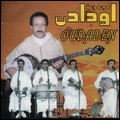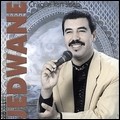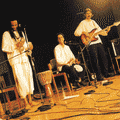One of the royal carriages owned by the royal Moroccan family is a present from the Queen of England. The chariot has long been the pièce de résistance of royal ceremonies in Morocco, particularly during Throne Day celebrations. The majestic vehicle, drawn by the finest horses, carries the king in a grandiose royal parade.
The carriage, which for years shaped Moroccans’ perception of national and royal celebrations, comes from a time when cars had not yet replaced other means of transportation. Records have it that it was a token of friendship from Queen Victoria, who reigned over the United Kingdom from 1837 to 1901, to her Moroccan ally Sultan Hassan I (1873–1894).

This present, worthy of royalty, was sent in the 1873 by the Queen of England. The gift was briefly mentioned, among others, by French naval officer and novelist Pierre Loti in his book «Au Maroc», released in 1890.
«…a golden carriage, in the Louis XV style – unexpected in this particular place, and weird in the midst of all this grandiose harshness – the only carriage existing in Fez», he described.
A gilded coach worthy of the Sultan's cortege
The gilded carriage was also mentioned in the writings of Edmondo De Amicis, an army officer of the Kingdom of Italy and also a writer. In his book «Marocco: Edizione integrale con note Copertina rigida» (1876 in Milan), De Amicis writes about his diplomatic mission to Morocco, accompanying the Italian ambassador to Tangier, and describes the cortège of Sultan Hassan I, mentioning the royal carriage.

«In the center a crowd of generals, masters of ceremony, magistrates, nobles, officers, slaves (…) all dressed in white, were drawn up in two long lines, one about thirty feet in advance of the other», he wrote in awe in Fez. «Behind them, on the side next the river, were all the Sultan’s horses in a row—large, beautiful animals, with velvet, gold-embroidered housings, and each one held by an armed groom, and at one end a little gilded coach, presented by the Queen of England to the Sultan, and always displayed on state occasions», he wrote.
Displayed by Sultan Hassan I since the 1870s, the gilded coach has since then become a staple of royal celebrations and the royal cortège. The carriage has been used by King Mohammed V and King Hassan II, wrote the British Embassy in Morocco in a 2021 Facebook post on the Throne Day occasion. «King Hassan II also used it at the funeral of King Mohammed V on February 28, 1961, and again in 1967», it added.
.jpg)
Its most recent appearances date from 1999. At the time, King Mohammed VI, recently enthroned, used it to go to the Ahl Fas Mosque in Rabat, reports the same source.
A symbol of power
Although used occasionally, the royal coach—whether the one offered by the Queen of England to the Alaouite family or others—has become a symbol of power when used in ceremonial activities. According to Moroccan historian Nabil Mouline in his article «La Fête du trône : petite histoire d’une tradition inventée», the parade carriage, presented to Sultan Hassan I (1873–1894) by Queen Victoria of England (1837–1901) (…) from a simple means of transport, it quickly became a badge of power and a symbol».

«It embodies the monarchy as a mystical body, an ideal, eternal center that represents continuity and stability, beyond the perishable bodies of monarchs», he wrote.
The vehicle is also a token of good relations between the two kingdoms, marked by the exchange of many intriguing presents. Courtesies between the two friendly kingdoms included Atlas lions, a Maxim gun, jewelry, horses and even an elephant called Stoke.





 chargement...
chargement...












